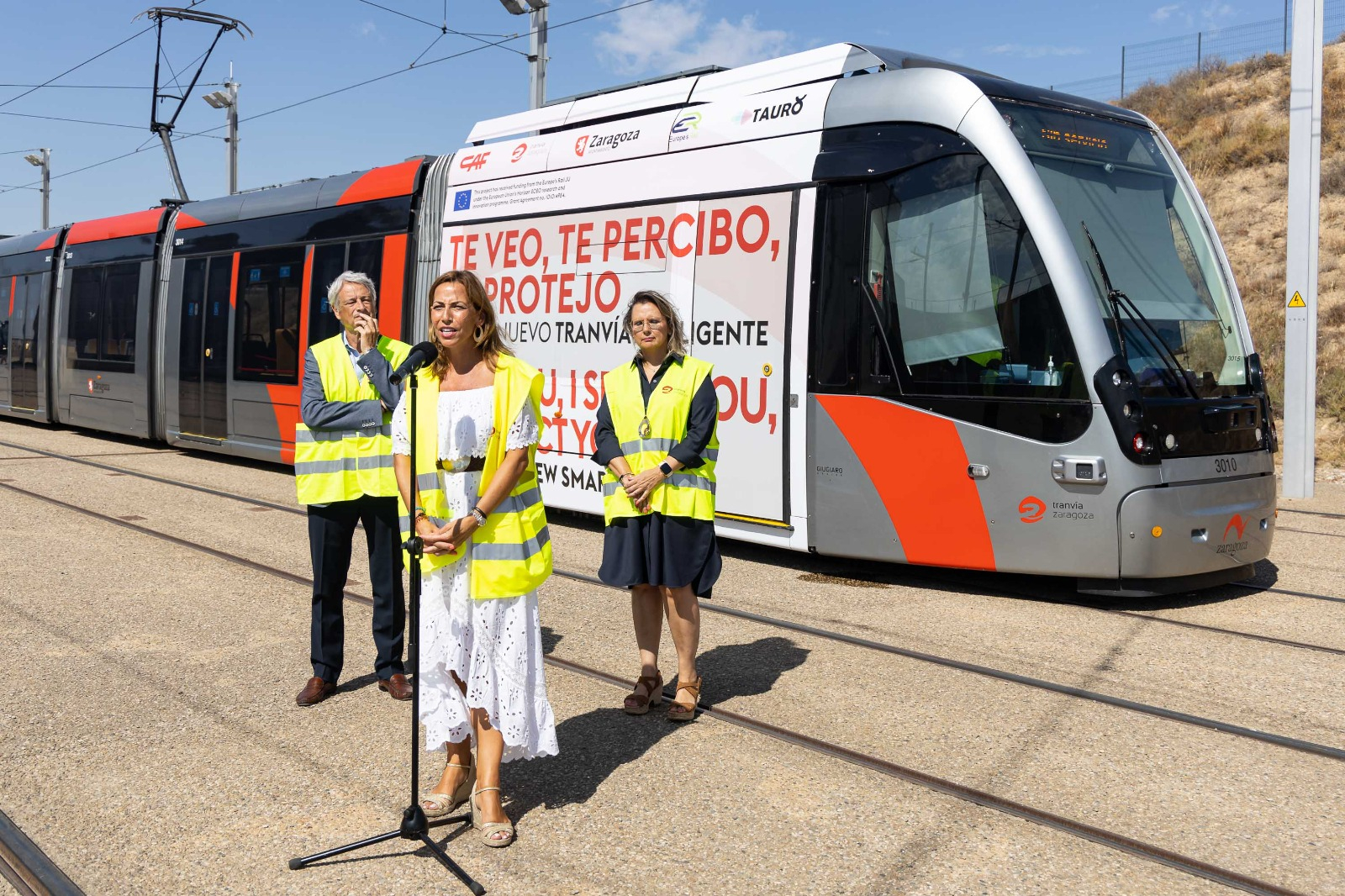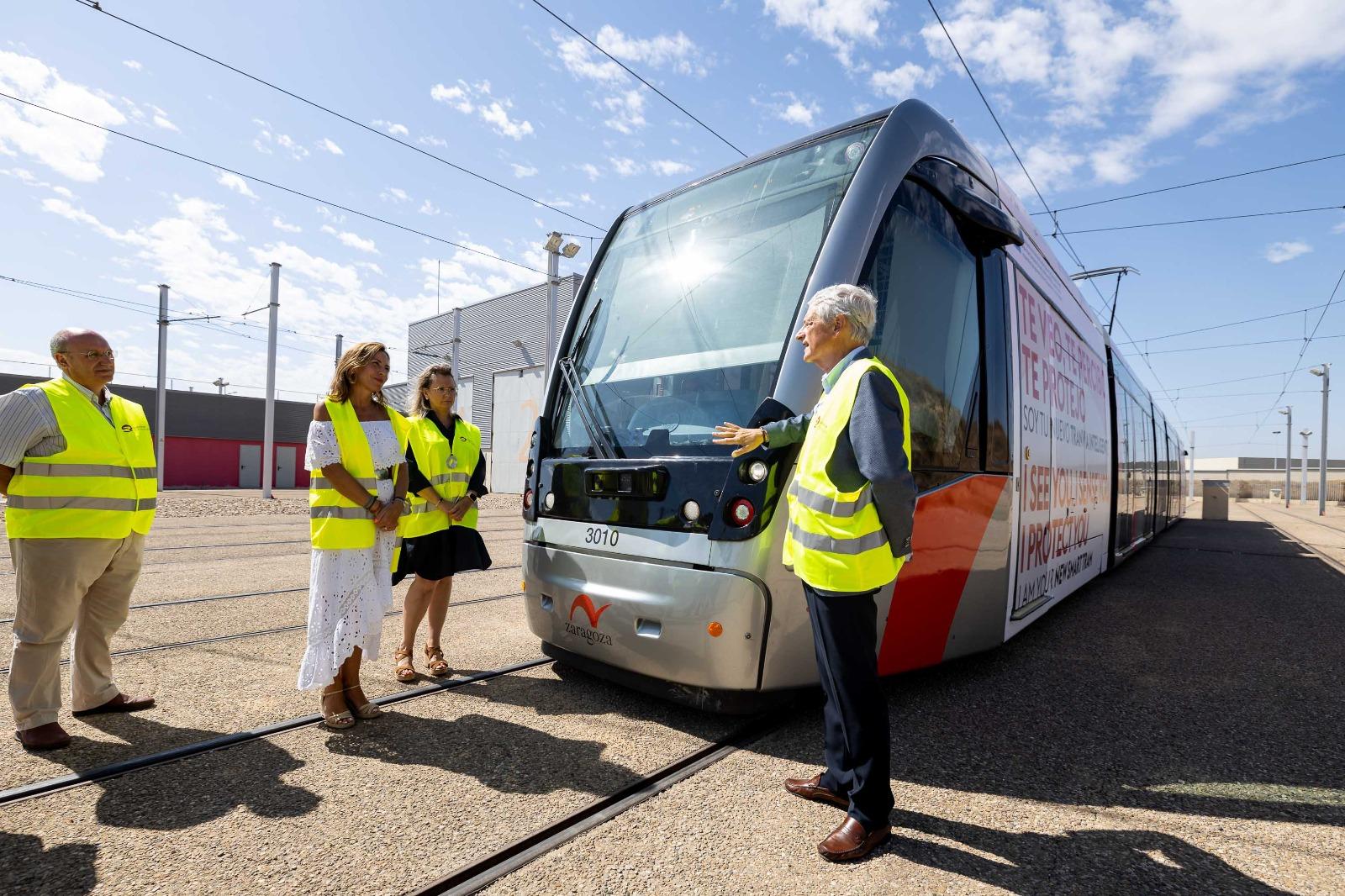“I see you, I perceive you, I protect you; I am your new intelligent streetcar”. This is how the Zaragoza Tramway unit is presented, which, since mid-July, has been incorporating data collection systems that will make it possible to develop new driving assistance systems for the benefit of safety and which, in the long term, will enable autonomous tramway driving.
The Compass project, which was announced by the Mayor of Zaragoza, Jorge Azcón, at the presentation of the European Tramway Congress held in the Aragonese capital in May, is led by CAF and is mainly financed by Europe’s Rail, the highest European body responsible for the development of railway systems.
It has been joined by the streetcars of two cities that are European benchmarks in streetcar innovation: Zaragoza, which was the pioneer in initiating the project, and Oslo, where its development will continue.
The first streetcar equipped with all the necessary material for this data collection was presented today at the Parque Goya depot, in the presence of the Councilor for Public Services and Mobility, Natalia Chueca; the manager of Los Tranvías de Zaragoza, Ana Moreno; and Eduardo Gálvez, CAF’s Cabinet Director.

The purpose of having means of transport from such different cities, one Mediterranean and the other Scandinavian, is to be able to test the systems in very different conditions: temperatures above 40ºC in summer in Zaragoza and below 0ºC in winter in the Norwegian capital, where the snow factor also comes into play.
Furthermore, these are two cities with very different urban structures and streetcar lines that each have their own particularities. By working closely with both modes of transport, CAF will be able to refine its systems in line with the practical demands of the operators, with the ultimate goal of developing a product that can be tailored to the needs of potential customers.
The road to the autonomous tramway
The Compass project has had as its starting point the Zaragoza Tramway, which will serve as a test bench for the first few months and will later be joined by the Oslo Tramway. In July, a series of sensors were installed in a unit that are already working and have begun to collect data in order to develop what is known as the Safe Positioning System.
The first step is to progressively move away from reliance on beacons and other systems in the infrastructure, which are often expensive and complex to install, maintain and operate, towards positioning systems that rely exclusively on data collected by the vehicles themselves.
To this end, the Zaragoza Tram’s intelligent unit has a “setup” of sensors for sensing the environment, including three radars in each cab (one central and two lateral), two cameras (one long-range and one fisheye) and a Lidar (a device that allows determining the distance from a laser emitter to an object or surface using a pulsed laser beam).
These devices collect information together with those already in the streetcar, such as speed sensors, to feed the algorithm and map the environment. These sensors can identify both static and moving objects, as well as their relative speed, and all data are processed on board by GMU units and sent “to ground” through a 4G connection system.
Now the project is focused on feeding the algorithm with as much information as possible and, the next step, will be to be able to perform tests in the controlled areas of Cocheras.
The aim there is to establish routines that improve safety in the movement of streetcars, as well as to increase energy efficiency with intelligent procedures such as switching on the air-conditioning equipment at the right time, eliminating unnecessary movements, etc.
Before reaching the goal of a 100% autonomous streetcar, there will be a number of intermediate steps. The main objective is to develop driving aids that allow the driver to make decisions not only based on the elements in his field of vision (traffic lights, other vehicles, etc.), but also with more information on the state of traffic and the elements he will encounter on his route, as well as the traffic light phases along the entire route, etc.
The system, once developed, will also allow decisions to be made to establish priorities along the route, taking into account variables such as speed and energy efficiency. All this will result in a much safer system, both for the driver and passengers, as well as for pedestrians and other vehicles occupying the urban space.















